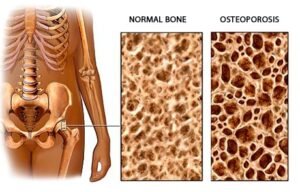Understanding Arthroscopy: A Minimally Invasive Solution for Joint Problems
When joint pain and discomfort begin to affect your quality of life, it’s crucial to explore effective and minimally invasive treatment options. Arthroscopy is one such advanced technique that offers a less invasive alternative to traditional open surgery, making it a preferred choice for many patients.
What is Arthroscopy?
Arthroscopy is a specialized surgical procedure used to diagnose and treat joint problems. It involves inserting a small camera, called an arthroscope, into the affected joint through a tiny incision (key hole). This camera provides real-time images of the joint’s internal structure, allowing the surgeon to see exactly what is wrong and guide the necessary treatment. Commonly performed on the knee, shoulder, elbow, wrist, ankle, and hip, arthroscopy enables both diagnosis and repair in a single procedure.

Why Choose Arthroscopy?
- Minimally Invasive: Unlike traditional surgery, arthroscopy requires only small incisions, leading to faster recovery and less post-operative pain.
- Faster Recovery: Patients typically return to daily activities sooner than with open surgery.
- Accurate Diagnosis and Treatment: Arthroscopy allows precise identification of joint issues and immediate treatment, such as cartilage repair or removing loose fragments.
- Less Scarring: Due to the small incisions, scarring is minimal, improving cosmetic outcomes.
- Lower Risk of Infection: Smaller wounds mean a reduced risk of infection, making this a safer option for many.
Conditions Treated by Arthroscopy
Arthroscopy can address a variety of joint conditions, including:
- Torn Ligaments: Such as ACL or meniscal tears in the knee.
- Cartilage Damage: Repairing or smoothing out worn or damaged cartilage.
- Inflammation: Addressing inflamed synovial tissues in conditions like rheumatoid arthritis.
- Loose Bodies: Removal of fragments of bone or cartilage floating within the joint.
- Shoulder Impingement: Releasing pinched tendons or repairing rotator cuff tears.

The Procedure: What to Expect
Arthroscopy is typically performed under general or local anesthesia, depending on the complexity of the case and patient preference. The surgeon makes small incisions around the joint to insert the arthroscope and other specialized instruments. The procedure may take anywhere from 30 minutes to 2 hours, depending on the joint and the treatment required.
Post-surgery, patients can usually go home the same day. Recovery times vary, but most people can resume normal activities within a few weeks, with physiotherapy often recommended to aid rehabilitation.
Why Arthroscopy is a Game-Changer for Joint Care
As joint preservation techniques continue to evolve, arthroscopy stands out as a game-changing procedure. Whether you are dealing with chronic pain, stiffness, or a sudden injury, arthroscopy offers a precise and effective solution with minimal downtime.
If you’re experiencing persistent joint pain and have not found relief through non-surgical methods, arthroscopy may be the next step toward regaining your mobility and improving your quality of life.
Final Thoughts
Don’t let joint pain hold you back. Arthroscopy can help diagnose and treat your condition with minimal disruption to your life. Speak to an experienced orthopedic surgeon to explore whether arthroscopy is the right option for you.
 Dr. Manoj Kumar Khemani has over 15 years experience in advanced arthroscopy surgery.
Dr. Manoj Kumar Khemani has over 15 years experience in advanced arthroscopy surgery.
Call +91-8697449191 for appointment or fill this contact form.











